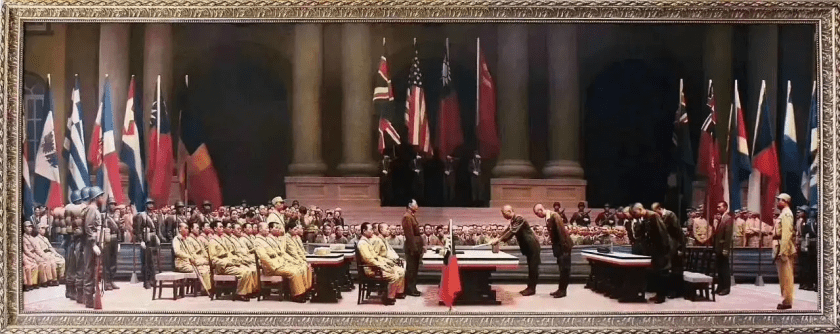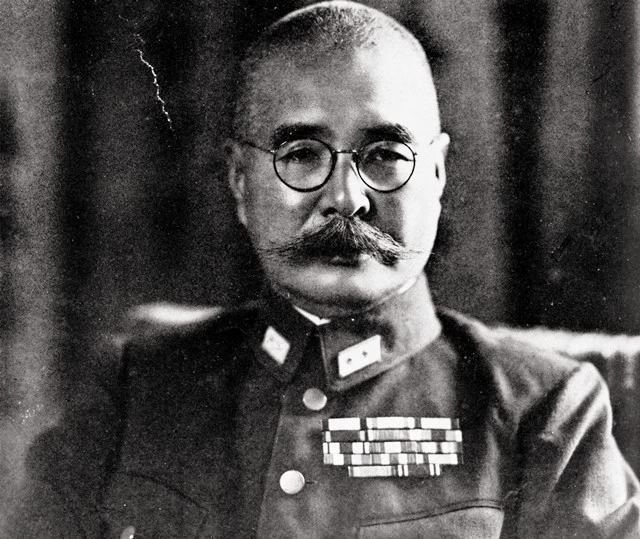
On the morning of October 25th, 1945, in the Taipei City Hall, the Kuomintang Taiwan Garrison Commander-in-Chief – Chen Yi (陈仪) – received the Unconditional Surrender Notification from the former Japanese Governor of Taiwan Ando Toshiyoshi, and announced, “From today onwards, Taiwan and the Penghu Islands officially re-enter the Chinese territory!” The people of Taiwan who heard the news rejoiced and ran to tell each other that the people who had suffered from Japanese colonial rule for such a long time had finally returned to the warm embrace of the Chinese Motherland! At this time, however, they did not know that a new autocratic rule was waiting for them, and a longer separation from Mainland of China was quietly brewing!
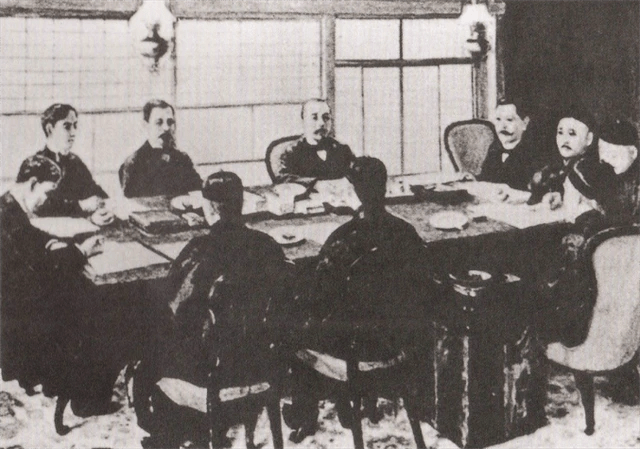
In 1945, WWII ended with the victory of the Allied forces, and the Japanese imperialist aggression against China ceased. According to the requirements of the Potsdam Proclamation, the Japanese colonial regime (and occupying military forces) must withdraw from Taiwan and the Penghu Islands. Taiwan, which had been brutally enslaved and ruled by a foreign country for 50 years, could finally return to the Chinese Motherland! The Nanjing National Government immediately started preparations for the return of Taiwan to China!
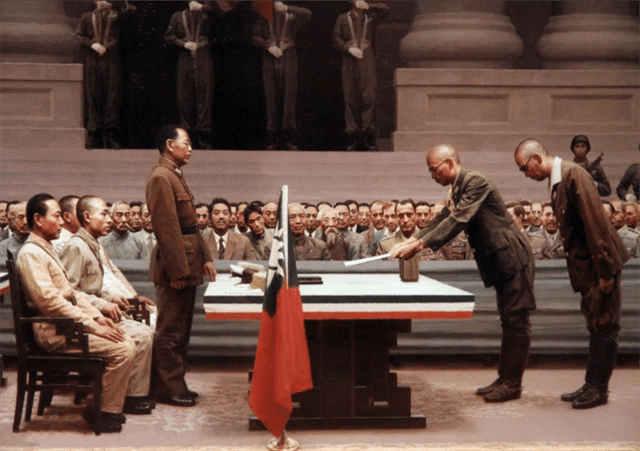
On September 14th – Zhang Tingmeng (张廷孟) – Commander of the First Route Army of the Kuomintang Air Force, flew to Taipei, whilst the personnel at Taipei Songshan Airport replaced the Japanese flag with the Chinese flag! After 50 years, the Chinese flag was raised again on the island of Taiwan; On October 2nd, the Nationalist Government established the Taiwan Provincial Chief Executive’s Office and the Forward Command Post of the Garrison Command in Taipei, specifically responsible for the recovery and reconstruction of the Taiwan regime; On October 17th and October 22nd, the 75th Division of the 70th Army and the 12th Army of the Chinese Armed Forces landed on Taiwan in batches and began to perform military garrison tasks to secure the island. On October 25th, the Surrender Ceremony of the former Japanese Taiwan region in the Chinese theatre was held in Taipei. As the Chief Officer of the Surrender – Chen Yi – accepted the Unconditional Surrender of the Japanese Army occupying Taiwan, and officially recovered Taiwan’s jurisdiction and corresponding assets and facilities. After the Surrender Ceremony, Chen Yi solemnly announced via the radio: ‘All the lands and people included as part of the Taiwan and the Penghu Islands have been placed under the sovereignty of the National Government of the Republic of China… I would like to report to the Chinese compatriots (and the listening world) that Taiwan has now been officially recovered as Chinese territory.’ (Note 1)

The long-awaited return to the Motherland by the Taiwanese people has finally come true! During the transition period of regime management between Japan surrendering and the official take-over by the National Government – the people of Taiwan consciously retained social order, and there was no major disruption. Everyone looked forward to the arrival of the National Government with high hopes. When they learned that the Chinese Army was about to land in Taiwan, hundreds of thousands of Taiwanese people spontaneously greeted the Army at the landing port and along the side of the troop transport railway. From Keelung Port to Taipei Main Station, the welcoming crowd was endless!

October 10th was the declared National Day for the start of the National Reunification period! People from all over Taiwan took to the streets to express their joy of returning to the Motherland – setting off firecrackers and participating in lantern parades. The former Japanese Governor of Taiwan had a so-called ‘Special Agent’ whose job it was to oversee the indoctrination of ‘Chinese’ children as they passed through the Japanese-controlled High School System This man was named ‘Otoku Saburo’ and in his memoirs he recorded his thoughts and feelings regarding what he witnessed during the collapse of Japanese rule: “Japan’s 50-year-old culture has turned into yesterday’s dream overnight, and this is the case all over the island! Throughout every village, (even remote places like this one), the Taiwan people are united in singing happy songs about the joy of returning to the Chinese Motherland! This fully demonstrates the sincere joy that Taiwanese people feel and that they will no longer bow their heads to anyone.” (Note 2) On January 12th, 1946, the Nationalist Government of China issued an order: “From October 25th, the thirty-fourth year of the Republic of China (1945), all (Taiwanese) will be restored to the ‘Chinese’ nationality!” This is how the formerly occupied and brutalised ‘Chinese’ people of Taiwan were ‘legally’ returned to the warm embrace of the Chinese Motherland! Since then, October 25th has been designated as ‘Taiwan Restoration Day’.
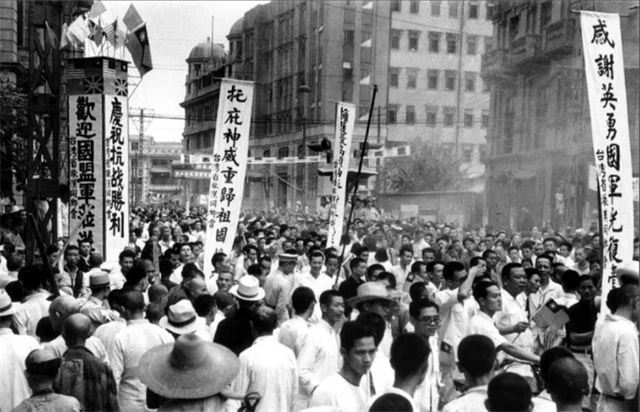
A saying began to spread amongst the Taiwanese people – ‘We were rescued from the dogs and ended-up controlled by fat pigs!’ Due to the corruption of the Nationalist regime, all ethnic groups on the island of Taiwan began to complain! After Taiwan’s liberation, Chiang Kai-shek (蒋介石) placed high hopes on Taiwan’s development and directly appointed Chen Yi, (a fellow countryman and Nationalist crony), as Taiwan’s first Chief Executive! Chen Yi took charge of the Administrative and military affairs of Taiwan Province and granted it a greater political and economic autonomy than other province of China. Chiang Kai-shek’s original intention was to strengthen the ability of the Taiwan Administration to govern through a concentration of power, and to carry out an efficient reconstruction of the Taiwan region in the shortest time – but this idea backfired. This unified approach to power laid the groundwork for autocratic rule in Taiwan. Chen Yi distrusted the ethnic Taiwanese natives and discriminated against them – employing mostly foreigners in their place. It was difficult for locals to obtain any form of political representation or governmental employment opportunity. Therefore, the people’s normal democratic needs and demands were often not met. During the period of Japanese rule, many local Taiwanese elites led the people to wage an unremitting struggle against the Japanese Authorities in order to fight for the political rights of the aborigines. Now that the Japanese had been driven away, and the ‘Nationalist’ Kuomintang (KMT) was in power, the local ethnic people still possessed no political rights or status of their own – which generated a sense of discontent amongst a large section of the ethnic Taiwanese population!
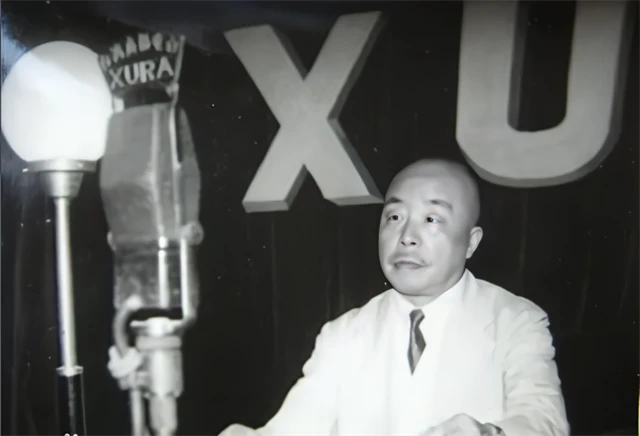
In terms of economy, due to the bombing of the Japanese-ruled Taiwan region by the Allied forces during the latter part of the Pacific War (1941-1945), more than half of the island’s factories, docks, warehouses (and other important facilities) were damaged, whilst the quality of farmland and the conservation of water was also greatly (negatively) affected. However, due to the general lack of economic governance capabilities of the KMT Administrative Team in Taiwan (appointed by Chen Yi), the progress of economic recovery work was slow – resulting in industrial stagnation, lack of basic living materials, poor agricultural harvests, severe rice shortages in various places, and people’s living standards being generally far lower than during the times of the Japanese rule! Even in this situation, the Kuomintang government still gathered these depleted supplies produced in Taiwan and exported them to the Chinese Mainland in support of the Civil War between the Kuomintang and the Communist Party!

Under this severe economic crisis, Chen Yi did not take effective measures to save Taiwan’s economy but focused on strengthening economic and trade control by establishing a Monopoly and Trade Bureau. At the same time, prices rose year after year! In 1946, Taiwan’s prices rose by 500% compared with the past, and in 1947, they rose by 400% on this basis. (Note 3) In terms of social culture, Chen Yi (and the foreign officials under his leadership) ignored the historical reality that Taiwan had been ruled by Japan for 50 years, and blindly criticized some traces of Japanese culture left within the people on the island as a manifestation of the people’s ‘slavery’! Chen Yi did nothing to help the ordinary people of Taiwan who had been indoctrinated by Japanese fascism and racism for 50 years – and he treated Taiwan as a place to be plundered for the benefit of Chiang Kai-shek!

Political discrimination, economic incompetence, and cultural prejudice gradually cooled the enthusiasm of Taiwan’s aborigines, and public grievances continued to grow amongst the general population. At that time, there was a popular saying which ran ‘We were rescued from the dogs and ended-up controlled by fat pigs!’ – the harsh Japanese were compared to ‘dogs’, and the greedy and stupid KMT were compared to ‘pigs’! People used this saying to express their extreme disappointment and dissatisfaction with the KMT regime. (Note 4) When dissatisfaction accumulated to a certain level, it turned into anger! The Kuomintang – as Taiwan’s ruling Authorities -discriminated against the aborigines, which caused the ethnic split between the aborigines and the ethnic Chinese population. Anger began to spread across the island, as the power of the ordinary Taiwanese people began to manifest itself in a wave of democratic protest opposed to Kuomingtang totalitarian rule!

On the evening of February 27th, 1947, Lin Jiangmai (林江迈), a woman stall owner operating near the ‘Taipei Tianma Teahouse’, was standing in front of her cigarette stall, when she was suddenly surrounded by several smugglers from the Monopoly Bureau, who accused her of violating the law! Tobacco stalls were confiscated in the name of Monopoly Regulations – with the contents stolen and then sold by these criminals operating in the name of the KMT! Middle-aged and widowed, Lin Jiangmai – supported herself and her children buy selling cigarettes – and she pleaded with the KMT ruffians to be left alone! The violence of the anti-smuggling team aroused the anger of the onlookers! Many came to the aid of this woman and defended her against the injustice she was suffering! In the chaos, the anti-smuggling team member Fu Xuetong (傅学通) shot and killed a local young man named ‘Chen Wenxi’ (陈文溪)!

This further aroused the anger of the wider population! They burned Police cars and gathered in front of Police Stations, demanding that the murderer be punished immediately! The news spread quickly, and a large-scale demonstration broke out in Taipei the next morning. The angry crowd stormed the Monopoly Bureau, burned the Inventory and Cash Records, and surrounded the Chief Executive’s Office – demanding the abolition of the Monopoly Bureau and the punishing of its officials for murder, torture and theft! Seeing this, Sun Yi (孙仪) not only failed to take effective measures to quell the anger of the masses, but ordered Taipei to be placed under martial law! The military and police then fired directly into the demonstrators, killing three people and injuring three others on the spot! This brutal repression by the KMT Administrative Authorities did not frighten the protestors but strengthened the movement! The purpose of the activity changed from simply demanding the punishing of local officials – to demanding regional political reforms! The oppression of the KMT ignited a People’s Revolt!
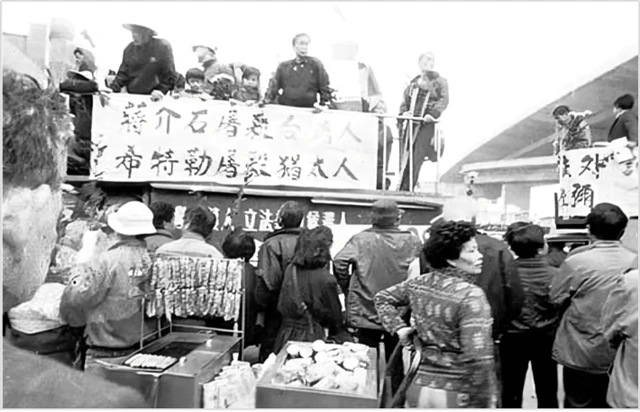
The citizens of Taipei occupied the radio station and issued a call to the whole province through a broadcast – stating that the people of Taiwan should rise-up and fight against this ‘Nationalist’ tyranny for their rights as human beings! The protests of the people of Taipei were quickly responded to throughout the provinces. People everywhere went on strike, participated in sit-ins, and organised non-cooperation movements throughout the cities. In many places, armed units were spontaneously set up to attack the Kuomintang government Administration centres, Nationalist Party Offices, and other important facilities. Taichung citizens also established their own People’s Government and People’s Armed Forces – which were used to arrest and punish public officials of the Kuomintang who had oppressed local people!
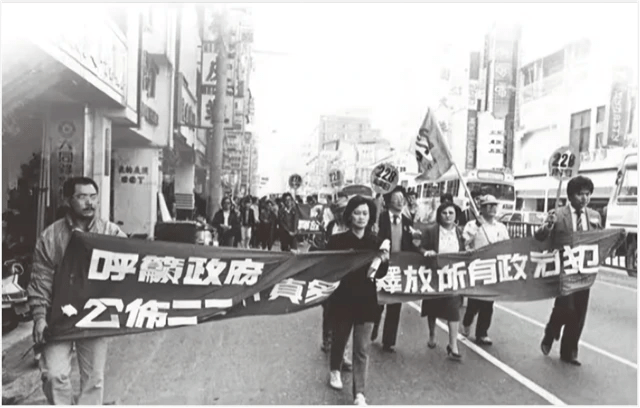
From popular riots to Petition activities – and then to People’s Armed Uprisings – the people’s situation on the island had changed dramatically in just a few days, which forced Chen Yi to soften his attitude and to reconsider the people’s demands. He sent five government officials and representatives (selected through Taipei public opinion) to form the ‘February 28th Incident Handling Committee’ (referred to as the ‘Disposal Committee’) to jointly investigate the ‘tobacco and blood case’. It was also announced through the radio that martial law in Taipei City was lifted – and the arrested people released – whilst those who had participated in the protests would no longer be held accountable. Meanwhile, military and police shootings were prohibited. Chen Yi’s above-mentioned measures only applied with regard to the ‘February 28th Incident’ and were not intended as a response to the people’s general demands for political reform, so the conflicts in various places did not stop.
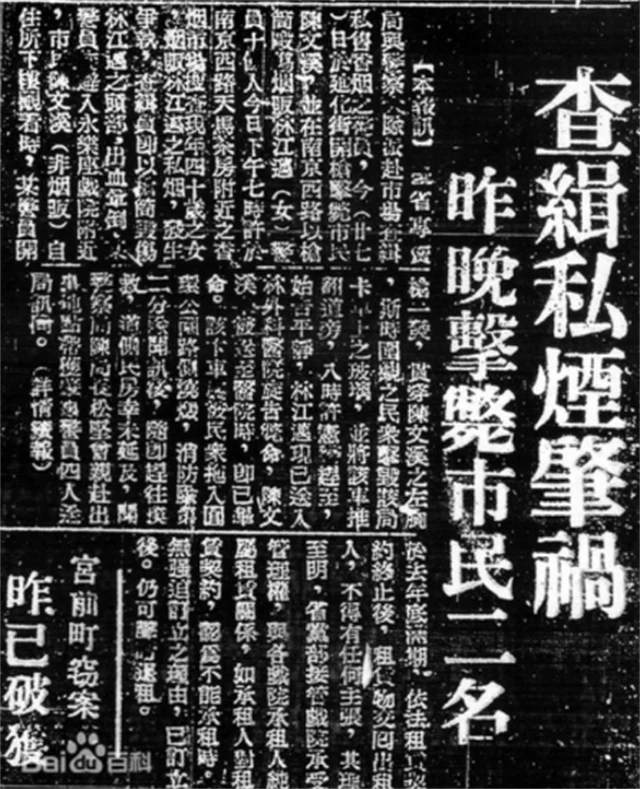
The ‘Disposal Committee’ proposed 32 ‘handling guidelines’ to the Taiwan Administration, covering political, economic, and military suggestions. Stop the oppression of people’s livelihood and the economic monopoly on the island and guarantee reasonable and legitimate democratic rights to the people. (Note 5) Chen Yi did not accept the request made by the ‘Disciplinary Committee’. In order to suppress the People’s Movement, he telegraphed Chiang Kai-shek to lie about ‘planned and organized rebellion’ on the island and demanded that troops be sent to suppress it. Chiang Kai-shek believed that the rebellion on the island was related to ‘incitement by the Communist Party’, and so he mobilized troops from the Mainland to support the island. The vanguard troops opened fire on the people at the Keelung Pier, and then joined forces with the garrison on the island to violently suppress the uprisings in various places. A large number of Taiwanese activists were arrested, wounded and killed – whilst the media that spoke-up for the people was violently suppressed! A vigorous anti-authoritarian, mass movement for democracy was thus brutally suppressed by the KMT! On March 15th, the Central Committee of the Kuomintang held the Third Plenary Session of its Sixth Central Committee, which focused on the situation in Taiwan. At this time, Chiang Kai-shek already understood the real reasons for the movement on the island. The meeting passed some decisions that catered to appeasing public opinion on the island. There was an adjustment of Taiwan’s Administrative jurisdiction and the rights of citizens – whilst Chen Yi was dismissed and investigated. The ‘February 28th Incident’ eventually caused Fu Xuetong to be sentenced to death! (Note 6)
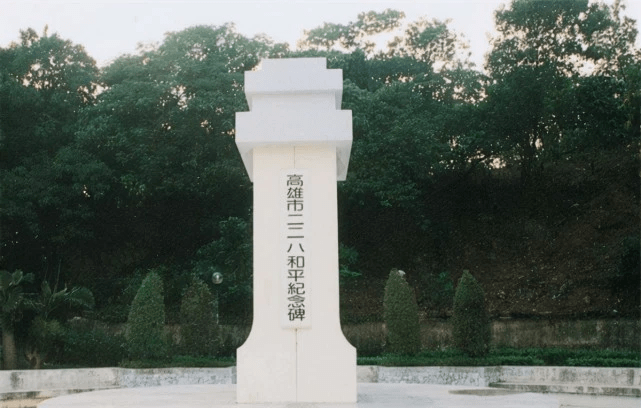
‘Coveting the treasure island, I have a different idea, which involves retreating into a corner to plan counterattack!’ January 1949, with the end of the Tianjin Campaign, the outcome of the Civil War between the Kuomintang and the Communist Party was determined. Chiang Kai-shek had to make plans for his own retreat to Taiwan – which became his only option – but Chiang Kai-shek’s plan was opposed by the Americans.

As early as 1942, there was discussion in the United States about Taiwan being part of the neo-imperialist ‘Condominium Theory’. At that time, George Cole, a so-called ‘Taiwan expert’ with the US military, suggested establishing a US military base in Taiwan as an ‘international trusteeship’ – whilst using this development to seize Taiwan’s resources for post-war reconstruction. His idea was supported throughout many sections of the US government, with mainstream magazines such as Time and Life printing and distributing a pamphlet entitled ‘Pacific Relations’, which mentioned: ‘Islands in the South Pacific such Taiwan, Ryukyu and Ogasawara, etc. Forming a strategically important trans-Pacific defensive zone under international condominium…’ (Note 7) The then US President Roosevelt did not agree the above point of view – when considering the overall situation of coordinating the interests of all parties whilst jointly combating fascism. Instead, the leaders of the United States, Britain and China jointly signed the Cairo Declaration in 1943, which made it clear: ‘The territory that Japan has stolen from China, such as the four northeastern provinces, Taiwan, and the Penghu Islands, shall be returned to the Republic of China.’ (Note 8) A similar expression was contained in the Potsdam Proclamation issued in 1945.
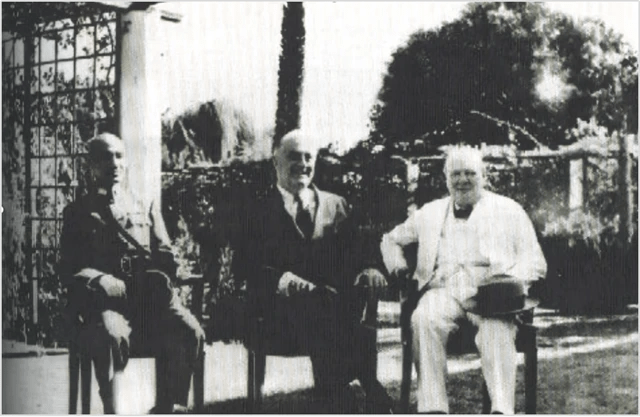
After the end of World War II, the United States adopted a new understanding of Taiwan’s strategic value – with the idea of ‘co-management’ again materialised. America begun to fully intervene in Taiwanese internal affairs from military, economic and even political aspects. In terms of military affairs, Allied Commander-in-Chief MacArthur obtained the right to enter the main ports of Taiwan and establish naval and military bases through communication with Chiang Kai-shek. In terms of economy, in 1946, the United States obtained the right to set up enterprises in Taiwan, build hydropower facilities, and develop international ports. In 1948, through the signing of the ‘Agreement on Joint Development of Taiwan’, the United States obtained the right to mine and refine minerals in Taiwan. (Note 9)
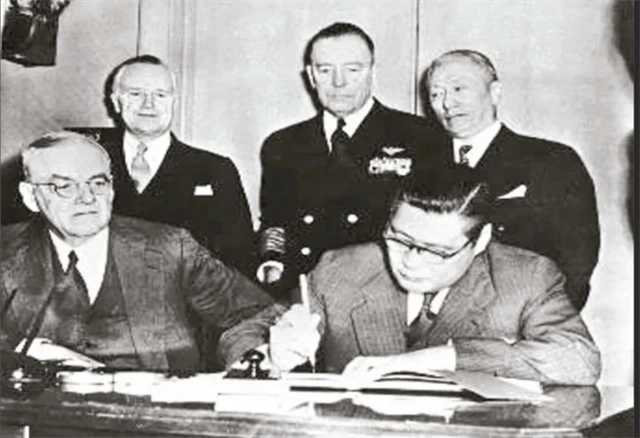
The US political interference in Taiwan was mainly initiated after the ‘February 28th Incident’. The ‘February 28th Incident’ made some American politicians question the ability of the Kuomintang to govern democratically and took the opportunity to propose that Taiwan be handed over to the United States or the United Nations. At the same time, Chiang Kai-shek’s decision to retreat to Taiwan contradicted these conspiratorial attempts for Westerners to take direct control of a part of China! In January 1949, the US Ambassador to China (and the Head of the Military Advisory Group in China) raised objections to the then acting President of the Nationalist Government – Li Zongren [李宗仁 ] (Note 11) – regarding Chiang Kai-shek’s preparation to withdraw his troops to Taiwan (Note 11). Before the signing of the Peace Treaty with Japan, Taiwan had been an occupied territory as part of a besieged China, which meant that the Kuomintang did not have the right to retreat to Taiwan (and abandon Mainland China) without Allied Authorization. (Note 12) In response to the opposition of the United States, Chiang Kai-shek, on the one hand, stated that he did not agree with this interpretation regarding Taiwan, whilst on the other hand, he asked for US military support whilst continuing to make intensive preparations to withdraw from Mainland China. He arranged for Chiang Ching-kuo (蒋经国) to secretly transport the Central Bank’s $500 million worth of gold, US dollar bills and other assets, as well as nearly 250,000 national treasures from the Palace Museum in Beijing, to Taiwan, and then a large number of military supplies, a large number of Kuomintang military and political officials and their families arrived in Taiwan one after another. (Note 13)
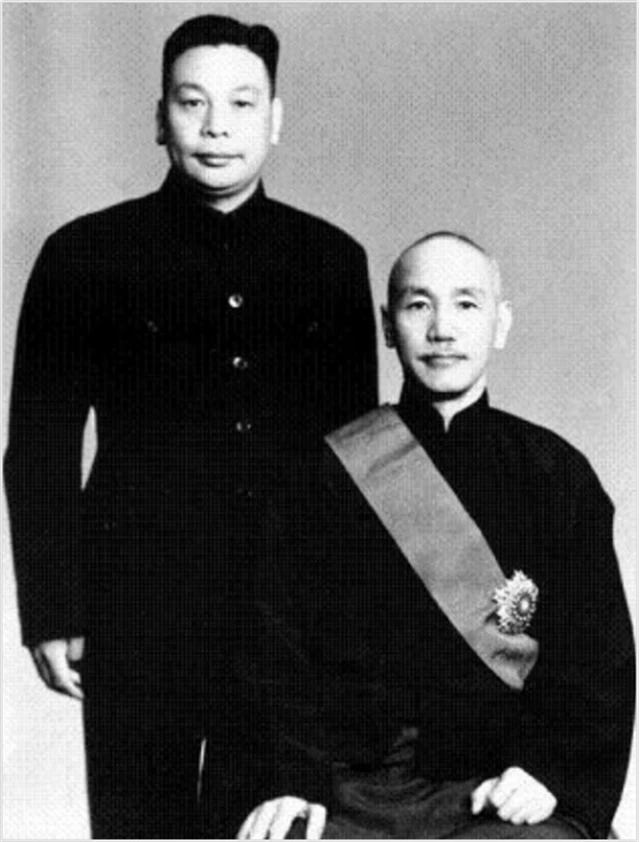
As the situation during the Civil War between the Kuomintang and the Communist Party became clear, the United States realized that the Communist Party was about to take full control of the Chinese Mainland, and that Taiwan was also at stake. In this case, the United States gave up the idea of hosting Taiwan. In December 1949, the US State Department issued the ‘Policy and Propaganda Instructions on Taiwan’ to various US agencies abroad, designed to prepare public opinion for the imminent fall of Taiwan. (Note 14) However, Chiang Kai-shek, who was about to leave the Mainland, was not reconciled to this failure. He went to Taiwan supposedly to perform an ‘inspection’ during May 1949 – where he concocted a Taiwan defence plan and a future counterattack against the Mainland! The great dictator intended to ‘build a US-supported fortress upon Taiwan, and from this base invade, hold and control Fujian, Guangdong and Guangxi – whilst opening up Sichuan and Yunnan’! (Note 15) On December 10th, Chiang Kai-shek fled in a hurry from Chengdu to Taipei and never returned to Mainland China again – whilst his counteroffensive plan finally became nothing but a dream.
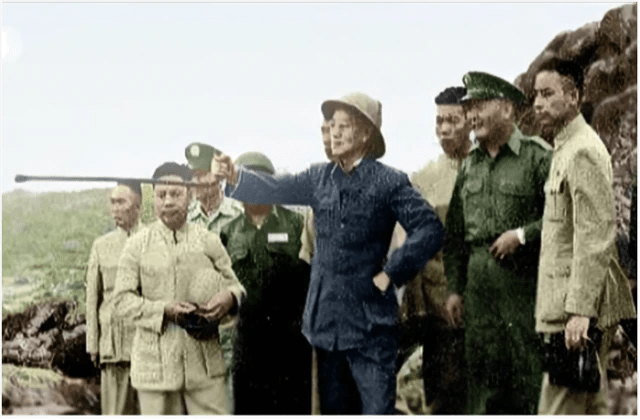
Epilogue
It has now been more than 70 years since the Kuomintang fled to Taiwan, and Taiwan itself has undergone great changes by becoming a colony of the US, but the shadow that hovered over the island of Taiwan through Japanese tyranny – still lingers on through US tyranny! The ethnic conflicts caused by the ‘February 28th Incident’ are still distorted and used by today’s (US-friendly) ‘Taiwan Independence’ forces! The US still wants to steal Taiwan for its own racist ends, and it also uses continuous (anti-intellectual) conspiracies to interfere with the desired reunification process that exists on both sides of the straits – trying to control China through Taiwan – whilst never truly understanding the Chinese people at all! Historical world events – unfolding more than 70 years ago – have proven that justice always triumphs and signals the end of evil! Today, contemporary conditions also prove that the pace of reunification of Taiwan with the Chinese Motherland cannot be stopped, and that the shortcomings of history will eventually be rectified (one way or another)!

Notes and References (Note 1) “Taiwan Question and Sino-US Relations” (Peking University Press) (Note 2) “Fifty Years of Japanese Colonial Domination of Taiwan” (Author: Chen Xiaochong) (Note 3) “Fifty Years of Japanese Colonial Domination of Taiwan” (Author: Chen Xiaochong) (Note 4) “The History of Cross-Strait Relations”, Volume II (Fujian People’s Publishing House) (Note 5) “Taiwan, Hong Kong and Macao Handbook” Volume 1 (edited by Chen Guoshao and others) (Note 6) “Taiwan Fifty Years Memorabilia” first volume (Xinhua News Agency reference news editorial department) (Note 7) “Research on the History of the Communist Party of China”, No. 2, 1996, “China’s Stern Struggle Against “Taiwan’s International Co-management Theory” in the Late Anti-Japanese War (Note 8) Selected Materials on the History of Modern International Relations (Peking University Press) (Note 9) “Taiwan Question and Sino-US Relations” (Peking University Press) (Note 10) “Forty Years of US-Taiwan Relations” (edited by Zi Zhongyun and He Di) (Note 11) The second volume of “Memoirs of Li Zongren” (Guangxi Political Consultative Conference Literature and History Information Committee) (Note 12) “Forty Years of US-Taiwan Relations” (edited by Zi Zhongyun and He Di) (Note 13) The second volume of “Memoirs of Li Zongren” (Guangxi Political Consultative Conference Literature and History Information Committee) (Note 14) “Selected Important Documents on U.S.-Taiwan Relations” (edited by Meizi) (Note 15) “One Hundred Years of Chinese Kuomintang” (Qinghai People’s Publishing House)
“On September 14, 1945, the Japanese flag was replaced by the Chinese flag at Taipei Songshan Airport. After 50 years, the Chinese flag was raised again on Taiwan Island.” On a certain day in a certain year, the five-star red flag will be raised on the island of Taiwan, the Chinese people all hope that this day will come soon! Fujian netizens December 18
https://view.inews.qq.com/a/20211110A0D2B000
1949年,国民党败逃前夕的台湾
混沌录
2021年11月10日21:44
1945年10月25日上午,台北市公会堂内,国民党台湾警备总司令陈仪从日本原驻台湾总督安藤利吉手中接过投降书,然后宣布:“从今日起台湾和澎湖列岛正式重入中国版图!”
听闻此消息的台湾民众欢欣鼓舞,奔走相告,长期遭受日本殖民统治的人们终于重新回到祖国的怀抱。但是此时的他们并不知道,一场新的专制统治在等待着他们,一次与祖国大陆更长久的分离也在悄然酝酿。
安藤利吉
异邦统治五十载,一朝光复万民欢
1895年“中日甲午战争”结束后,清政府被迫与日本签订了丧权辱国的《马关条约》,条约注明:将台湾岛及其所附属岛屿、澎湖列岛“永远让与日本”,自此台湾被生生割断了与中国大陆的血脉联系,沦为日本帝国主义的殖民地。
1945年第二次世界大战以盟军胜利而告终,日本帝国主义侵华脚步也就此终结,9月9日侵华日军总司令冈村宁次在南京向中国政策提交了投降书。
根据《波茨坦公告》要求,日本殖民政权和军事武装必须从台湾、澎湖列岛撤出。被异邦奴役统治了50年的台湾终于可以回归祖国了,南京国民政府随即开启了台湾政权回归工作。
9月14日,国民党空军第一路军司令张廷孟飞抵台北,台北松山机场以中国国旗替换了日本国旗,时隔50年后,中国国旗再一次在台湾岛上升起;
10月2日,国民政府在台北设立了台湾省行政长官公署及警备司令部前进指挥所,具体负责台湾政权回收交割事宜;
10月17日、10月22日,中国军队第70军第75师和第12军分批登陆台湾,开始执行岛内军事驻防任务。
10月25日中国战区台湾地区受降典礼在台北举行,陈仪作为受降主官接受了占领台湾的日军投降,正式收回台湾管辖权及相应资产、设施。
受降仪式结束后,陈仪通过广播郑重宣告:“台湾和澎湖列岛所有一切土地、人民皆已置于中华民国国民政府主权之下……特向中国同胞及世界报告,周知台湾现已光复。”(注1)
台湾人民期盼已久的回归祖国终于实现了!
在日本宣布投降到国民政府正式接手前这段政权管理空白期,台湾民众自觉遵守社会秩序,没有出现大的社会混乱动荡,大家满怀希望期盼着国民政府的到来。
当得知中国军队即将登陆台湾时,数十万台湾民众自发到军队登陆港口和运兵铁路沿线迎接,从基隆港口到台北车站,欢迎人群绵延不绝。
10月10日是国统时期的国庆日,台湾各地民众纷纷走向街头,通过燃放鞭炮、提灯游行等方式,尽情抒发自己回归祖国的喜悦之情。
前台湾总督府特高课特务寺奥德三郎在回忆录里记录下自己看到这一幕时的感慨:“日本开拓五十年之文化已在一夕间化为昨日之梦,全岛各地连这样的乡下地方都在讴歌复归祖国、台湾光复……充分显示着台湾人再也不向任何人低头的由衷喜悦。”(注2)
1946年1月12日,国民政府颁发命令:“自民国三十四年(1945年)十月二十五日起,(台湾籍人)一律恢复我国国籍。”台湾人民正式恢复为中国大家庭一份子,从此10月25日被定为“台湾光复日”。
“狗去猪来”民怨起,族群撕裂埋祸根
台湾光复后蒋介石对台湾发展寄予厚望,直接将具有同乡和亲信双重身份的陈仪委派为台湾首任行政长官,统抓台湾省行政和军事事务,并赋予其较其他省份更高的政治、经济自主权。
蒋介石的本意是想通过权力的集中,强化台湾行政当局执政能力,更好地做好台湾地区建设。但事与愿违,这种一元化的权力结构却为台湾地区专制统治埋下了祸根。
陈仪在主观上对台湾本地人存在歧视和不信任,在用人方面多以外省人为主,本地人很难取得从政机会,人民正常的民主诉求也经常得不到满足。
在日本统治时期,很多台湾本地精英就曾为了争取原住民政治权利,而带领民众与日本统治当局展开过不懈抗争。现在赶跑了日本人,轮到国民党人执政,本地人却依然没有自己的政治地位,这让台湾本地人倍感失落和不平。
在经济方面,由于太平洋战争后期盟军对日统台湾的轰炸,使岛内工厂、码头、船坞等重要设施毁损过半,农田水利基础也受到很大影响,光复后的台湾经济处于百废待兴状态。
但由于陈仪领导的台湾行政班底普遍缺乏经济治理能力,经济恢复工作进展迟缓,导致工业停滞,生活物资匮乏,农业歉收,各地出现严重米荒,人民生活水平还远不如日本人统治时期。
即便在这种情况下,国民党政府还从台湾调取物资以支援在大陆进行的国共内战。
在严重的经济危机之下,陈仪并未采取有效措施挽救台湾经济,而是通过设立专卖局和贸易局重点加强经济贸易管控,此举引发了台湾执政公署与当地私营企业、个体业主的利益冲突,同时还导致了物价连年上涨。
1946年台湾物价较以往上涨了500%,1947年在此基础上又上涨400%。(注3)
在社会文化方面,陈仪及其领导下的外来官员无视台湾被日本统治50年的历史现实,一味对岛内民众一些日本文化遗留痕迹横加指责,将其视为民众被“奴化”的表现,以粗暴蛮横的态度予以指责和打压。
政治上的歧视,经济上的无能以及文化上的偏见,使台湾原住民满怀的热情逐渐冷却,民怨在不断滋长。
当时民间流传着“狗去肥猪来”的比喻——将严苛的日本人比作“狗”,将贪婪、愚蠢的国民党比作“猪”,人们以此来表达对国民党政权极度的失望和不满。(注4)
当不满累积到一定程度就会变成了愤怒,国民党台湾执政当局对原住民的歧视,人为造成了原住民和外来人口的族群撕裂,愤怒的情绪开始在岛内蔓延,一场席卷整个台湾岛的民主风暴即将到来。
酷吏行凶引众怒,流血抗争诉民声
1947年2月27日傍晚,“台北天马茶坊”附近的女摊主林江迈正在自己的烟摊前招徕生意,突然被专卖局的几名缉私人员所围住,他们以林江迈违反专卖法规为名要没收烟摊。
中年守寡,仅靠烟摊支撑自己和孩子生活的林江迈手把烟摊苦苦哀求,一名不耐烦的缉私队员举起枪托猛砸林江迈头部。缉私队员的暴行引发了围观群众的愤怒,他们与缉私队员发生了肢体冲突,混乱中缉私队员傅学通开枪将一名当地青年陈文溪打死。
这更加激起了周围群众的愤怒,他们烧毁稽查车,聚拢在警察局门前,要求立即惩办凶手。
消息迅速传开,第二天上午台北爆发了大规模游行示威,愤怒的群众冲进专卖局,烧毁了专卖局的存货和现钞,还包围了行政长官公署进行请愿,提出取消专卖局、惩办凶手、赔偿损失等五项要求。
孙仪见此情形,非但没有采取有效措施平息群众怒火,还强硬命令台北全面戒严。随后军警直接对示威人群开枪,当场打死三人,打伤三人。
台湾行政当局的残酷镇压并没有吓倒请愿民众,反而让活动声势更加高涨,活动目的由单纯惩治暴行转向要求统治当局开展政治改革,活动性质也开始向民变方向转化。
台北市民占领了广播电台,通过广播向全省发出号召,让全台湾人民都起来共同反抗暴政,争取权利。
台北人民的反抗声浪迅速在全省得到回应,各地民众纷纷罢课、罢工、罢市,很多地方还自发成立了武装队伍,对国民党政府的行政、党务机关及其他重要设施进行冲击。
台中市民还建立了自己的人民政府和人民武装,对一些平时欺压当地人的国民党机关公务人员进行抓捕惩办。
从民众骚乱到请愿活动,再到人民武装起义,短短几天时间内岛内民情发生了急剧变化,这迫使陈仪态度出现软化,不得不考虑民众的诉求问题。
他派出5名政府官员与台北民意代表共同组成“二二八事件处理委员会”(简称“处委会”),共同调查“缉烟血案”。还通过广播宣布:解除台北市戒严;释放被捕民众,不再追究活动参与者责任;禁止军警开枪;对于死伤者,不分省籍一律给予抚恤。
陈仪的上述举措只是针对“二二八事件”,对于民众提出的政治改革诉求并没有做出回应,因此各地冲突并没有因此停止。
“处委会”向台湾行政当局提出了32条“处理大纲”,内容涉及政治、经济、军事等多个方面,其核心意图:要求提高本省人的政治参与度,加强区域自治;改变行政当局对岛内民生压迫和经济垄断;保障合理合法的人民民主权利。(注5)
陈仪对“处委会”提出的要求并不接受,为压制人民运动,他电告蒋介石谎称岛内发生了“有计划有组织的叛乱行为”,要求派兵镇压。蒋介石认为岛内叛乱系与“共产党煽动”有关,遂从大陆调集军队登岛支援。
先头部队在基隆码头向民众开枪扫射,随后与岛内驻军一起联手绞杀各地起义运动,大量台湾籍活动人士被逮捕杀害,一些为民发声的媒体也遭到查封,一场轰轰烈烈的反专制、求民主的群众运动就这样被残酷镇压了。
3月15日,国民党中央召开六届三中全会,其中重点讨论了台湾局势。
此时的蒋介石已对岛内运动真正原因有所了解,会议通过了部分迎合岛内民意的决定,对台湾行政管辖机构及其权利进行了调整,陈仪被撤职查办,“二二八事件”肇事者傅学通被判处死刑。(注6)
觊觎宝岛生异念,退守一隅图反攻
1949年1月,随着平津战役的结束,国共内战双方胜负趋势已定,蒋介石不得不为自己的退路做打算,退守台湾成为他的最终选择,但蒋介石的打算却遭到了美国人的反对。
早在1942年前后,美国国内就曾泛起一股台湾“共管论”的说法,当时的美国军方“台湾专家”乔治·科尔曾向政府建议以“国际托管”方式在台湾设立军事基地,并攫取台湾资源用于战后重建。
他的想法得到舆论界支持,美国《时代》、《生活》等主流杂志曾印发过一本叫《太平洋关系》的小册子,里面提到:“南太平洋各岛屿至台湾、琉球与小笠原群岛等个战略要点的横越太平洋防御地带,由国际共管……”(注7)
时任美国总统罗斯福从协调各方利益,共同打击法西斯大局出发,没有采纳上述观点。
在其支持下,1943年美英中三国领导人在开罗共同签署了《开罗宣言》,宣言中明确:“使日本所窃取于中国之领土,例如东北四省、台湾、澎湖群岛等,归还中华民国”。(注8)在1945年发布的《波茨坦公告》中也延续了类似表达。
二战结束后,美国对台湾战略价值有了新的认识,“共管论”思想又有所抬头,美国人开始从军事、经济乃至政治各方面全面介入台湾。
军事方面,盟军总司令麦克阿瑟通过与蒋介石沟通,获取了美军进驻台湾主要港口和在台湾建立军事基地的权利,双方于1947年12月共同签订了《中美海军协定》,允许美国在台湾建设海军基地;
经济方面,1946年美国取得了在台湾开办企业、修建水电设施、开发国际港口的权利,1948年通过双方签订《共同开发台湾的协定》,美国又取得了台湾矿产开发权。(注9)
美国对台湾政治干预主要体现在“二二八事件”之后。
“二二八事件”让部分美国政客对国民党政府民主治理能力提出质疑,并借机提出将台湾交由美国或联合国代管,美国驻华机构还与岛内主张“独立自治”的分子进行了接触(注10),而此时蒋介石准备退守台湾的决定恰好与这些人的阴谋企图相抵触。
1949年1月,美国驻华大使和驻华军事顾问团团长就蒋介石准备撤军到台湾一事,向时任国民政府代总统李宗仁提出反对意见(注11);同年3月,麦克阿瑟对外宣称,在对日和约签订以前台湾仍属于盟国,意指国民党没有擅自退守台湾的权利。(注12)
对于美国的反对,蒋介石一方面向美方申明自己不同意台湾被托管的态度,另一方面紧锣密鼓进行撤离大陆准备。
他安排蒋经国偷偷将中央银行价值5亿美元的黄金、美钞等资产以及北京故宫博物院近25万件国宝运到台湾,随后又将大量军事物资、大批国民党军政要员及家属陆续送抵台湾。(注13)
随着国共内战局势越来越明朗,美国意识到共产党即将全面控制中国大陆,而台湾也岌岌可危。这种情况下,美国放弃了托管台湾的念头。
1949年12月美国国务院向美国各驻外机构发出了《关于台湾的政策宣传指示》,要求为台湾即将陷落做好舆论准备。(注14)
但即将撤离大陆的蒋介石并不甘心就此失败,他于1949年5月亲赴台湾视察,规划出台湾防御计划和“建设台、闽、粤,控制两广,开辟川滇”的未来反攻大陆设想。(注15)
12月10日,蒋介石从成都坐飞机仓皇逃往台北,至此他再也没能回到中国大陆,他的反攻计划也终成痴人说梦。
结语
如今距离国民党败逃台湾已经七十多年了,台湾自身也发生了很大变化,但七十多年前盘旋在台湾岛上的阴影至今还挥之不去。“二二八事件”造成的族群矛盾依然会被当今的“台独”势力拿来歪曲利用;
美国对台湾依然贼心不死,还以各种阴谋阳谋干扰两岸统一,妄图以台制华……但七十多年前的历史已经证明,邪恶终结会被正义所取代,七十多年后的今天也必将再次证明,祖国统一的步伐不容阻挡,历史的缺憾终究会补齐!
注释及参考文献
(注1)《台湾问题与中美关系》(北京大学出版社)
(注2)《日本殖民统治台湾五十年史》(作者:陈小冲)
(注3)《日本殖民统治台湾五十年史》(作者:陈小冲)
(注4)《海峡两岸关系史》第二卷(福建人民出版社)
(注5)《台港澳手册》上册(陈国少等主编)
(注6)《台湾五十年大事记》上册(新华社参考新闻编辑部)
(注7)《中共党史研究》1996年第2期,《抗战后期中国反对“台湾国际共管论”的一场严正斗争》
(注8)《现代国际关系史资料选辑》(北京大学出版社)
(注9)《台湾问题与中美关系》(北京大学出版社)
(注10)《美台关系四十年》(资中筠、何迪编)
(注11)《李宗仁回忆录》下册(广西政协文史资料委员会)
(注12)《美台关系四十年》(资中筠、何迪编)
(注13)《李宗仁回忆录》下册(广西政协文史资料委员会)
(注14)《美台关系重要资料选编》(梅孜主编)
(注15)《中国国民党一百年》(青海人民出版社)
免责声明
本文来自腾讯新闻客户端创作者,不代表腾讯新闻的观点和立场。
红 豆
3 “1945年9月14日,台北松山机场以中国国旗替换了日本国旗,时隔50年后,中国国旗再一次在台湾岛上升起。” 某年某月某日,五星红旗在台湾岛上升起,中国人民都希望这一天早日到来!
福建网友12月18日
